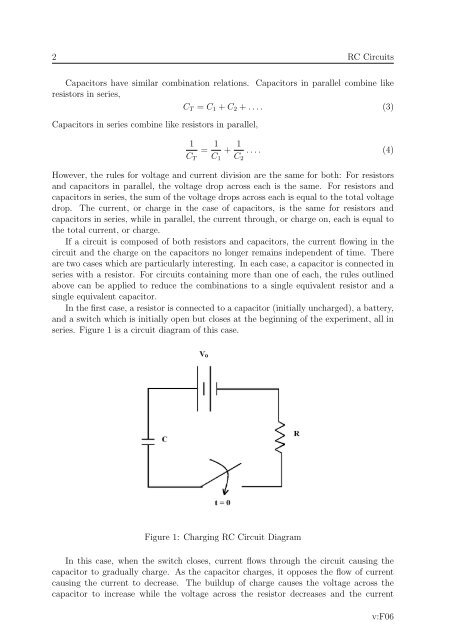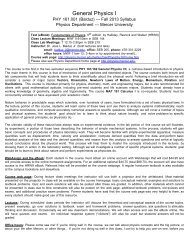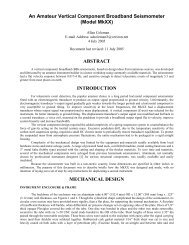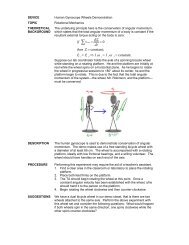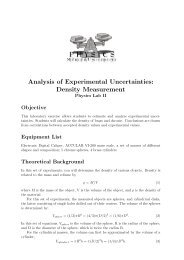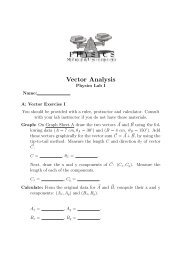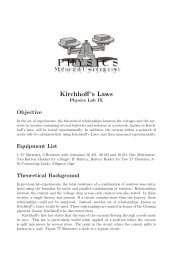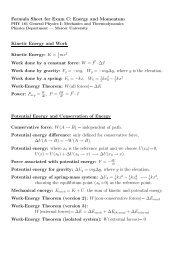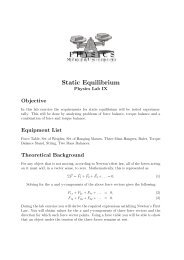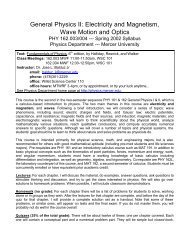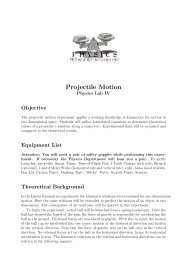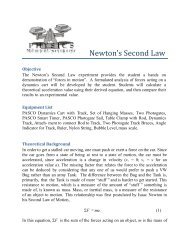RC Circuits and The Oscilloscope - Mercer University Physics
RC Circuits and The Oscilloscope - Mercer University Physics
RC Circuits and The Oscilloscope - Mercer University Physics
You also want an ePaper? Increase the reach of your titles
YUMPU automatically turns print PDFs into web optimized ePapers that Google loves.
2 <strong>RC</strong> <strong>Circuits</strong>Capacitors have similar combination relations. Capacitors in parallel combine likeresistors in series,C T = C 1 + C 2 + . . . . (3)Capacitors in series combine like resistors in parallel,1C T= 1 C 1+ 1 C 2. . . . (4)However, the rules for voltage <strong>and</strong> current division are the same for both: For resistors<strong>and</strong> capacitors in parallel, the voltage drop across each is the same. For resistors <strong>and</strong>capacitors in series, the sum of the voltage drops across each is equal to the total voltagedrop. <strong>The</strong> current, or charge in the case of capacitors, is the same for resistors <strong>and</strong>capacitors in series, while in parallel, the current through, or charge on, each is equal tothe total current, or charge.If a circuit is composed of both resistors <strong>and</strong> capacitors, the current flowing in thecircuit <strong>and</strong> the charge on the capacitors no longer remains independent of time. <strong>The</strong>reare two cases which are particularly interesting. In each case, a capacitor is connected inseries with a resistor. For circuits containing more than one of each, the rules outlinedabove can be applied to reduce the combinations to a single equivalent resistor <strong>and</strong> asingle equivalent capacitor.In the first case, a resistor is connected to a capacitor (initially uncharged), a battery,<strong>and</strong> a switch which is initially open but closes at the beginning of the experiment, all inseries. Figure 1 is a circuit diagram of this case.Figure 1: Charging <strong>RC</strong> Circuit DiagramIn this case, when the switch closes, current flows through the circuit causing thecapacitor to gradually charge. As the capacitor charges, it opposes the flow of currentcausing the current to decrease. <strong>The</strong> buildup of charge causes the voltage across thecapacitor to increase while the voltage across the resistor decreases <strong>and</strong> the currentv:F06


